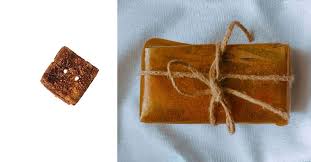A third-year student at Pearl Academy’s Delhi School of Design has produced biomaterials in her kitchen that could revolutionise the garment industry. Namya Parikh, 21 years old, confirmed that the ingredients utilised were dried lemon and orange peels fused with agar agar powder. We can make buttons and dry packaging materials with this versatile material.

Reducing the toxins released by the textile sector has become absolutely vital. Textile companies and their raw material processing units have contaminated the air, water, and land, posing a major threat to the environment. It has put the lives of humans and other animals on the planet in jeopardy. The pollutants emitted by such enterprises are a direct cause of global warming. In the long run, it also creates hazardous diseases and health concerns in those who are exposed to contaminants.
New sustainable solutions are critical since the clothes and textiles sectors emit at least 1.2 billion tonnes of greenhouse emissions each year. Namya has collaborated with a fashion designer who is a Pearl Academies alumnus to create accessories such as earrings, necklaces, and belts out of the same material.
Namya’s final assignment for the product industry course was to come up with sustainable solutions to “bio leather.” Their goal, as she recalls, was to study the materials remotely, and their role was to observe the waste elements generated in the kitchen and make something out of them. Namya uses lemon and orange peels and agar-agar, plant-based gelatine used as a binding agent, for this. This trial-and-error technique lasted three weeks, during which Namya perfected the formula and created a flexible yet robust material that can be poured into moulds to create various forms in its wet state.
The utilisation of organic raw materials can aid in the reduction of pollution emissions by textile mills. Cotton cultivation necessitates the use of the most pesticides and fertilisers, thus organic cotton is very useful. Furthermore, before being disposed of, the waste generated by textile manufacturing companies should be treated to ensure that it is free of harmful compounds. Environmentally friendly agricultural and manufacturing processes should be used.

The peels were ground and dried in the sun before being bound with agar-agar. After that, the mixture is spread out in thin sheets and air-dried for many hours. After that, they’re used as a soluble gift wrapper. She is collaborating with alumni to make jewellery that is still in the final stages of development. Namya also claims that because her products are created from lemon and orange peels, they boost soil fertility.
Shashi A

